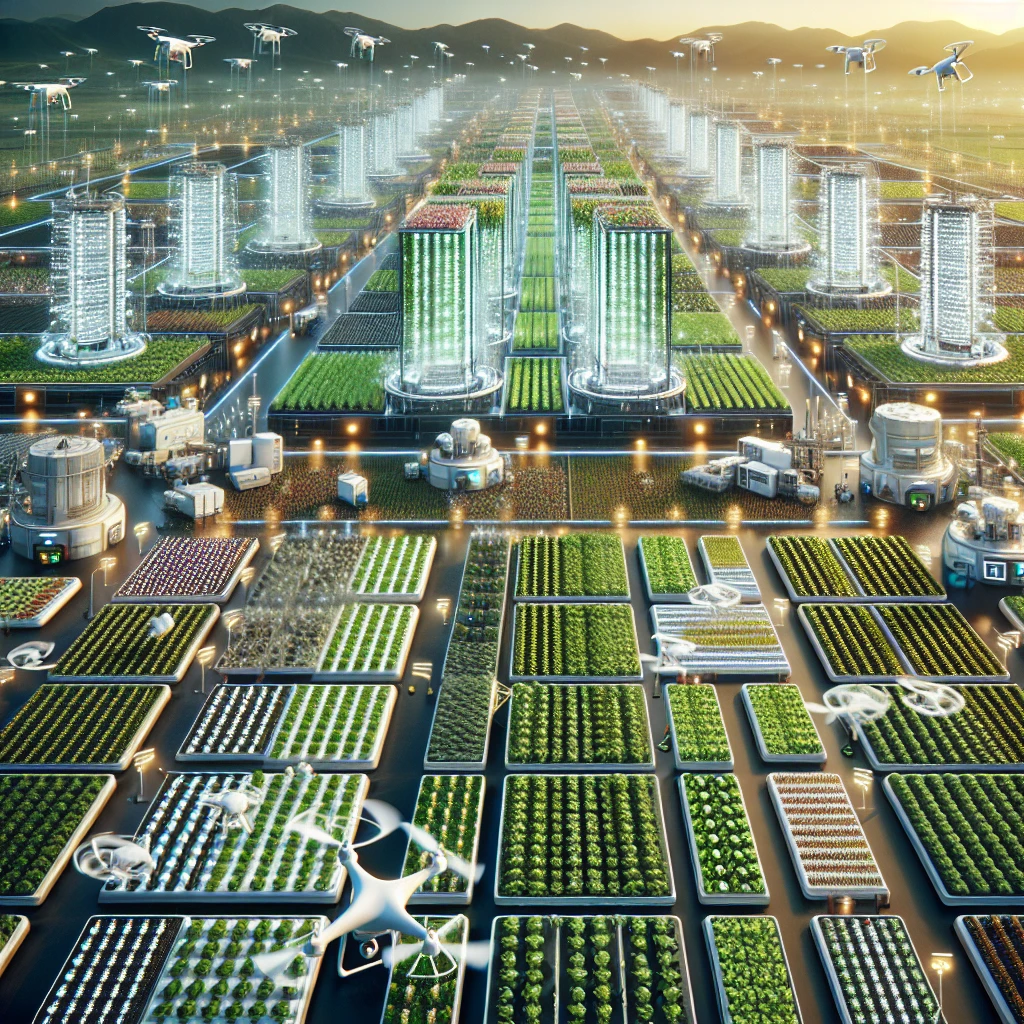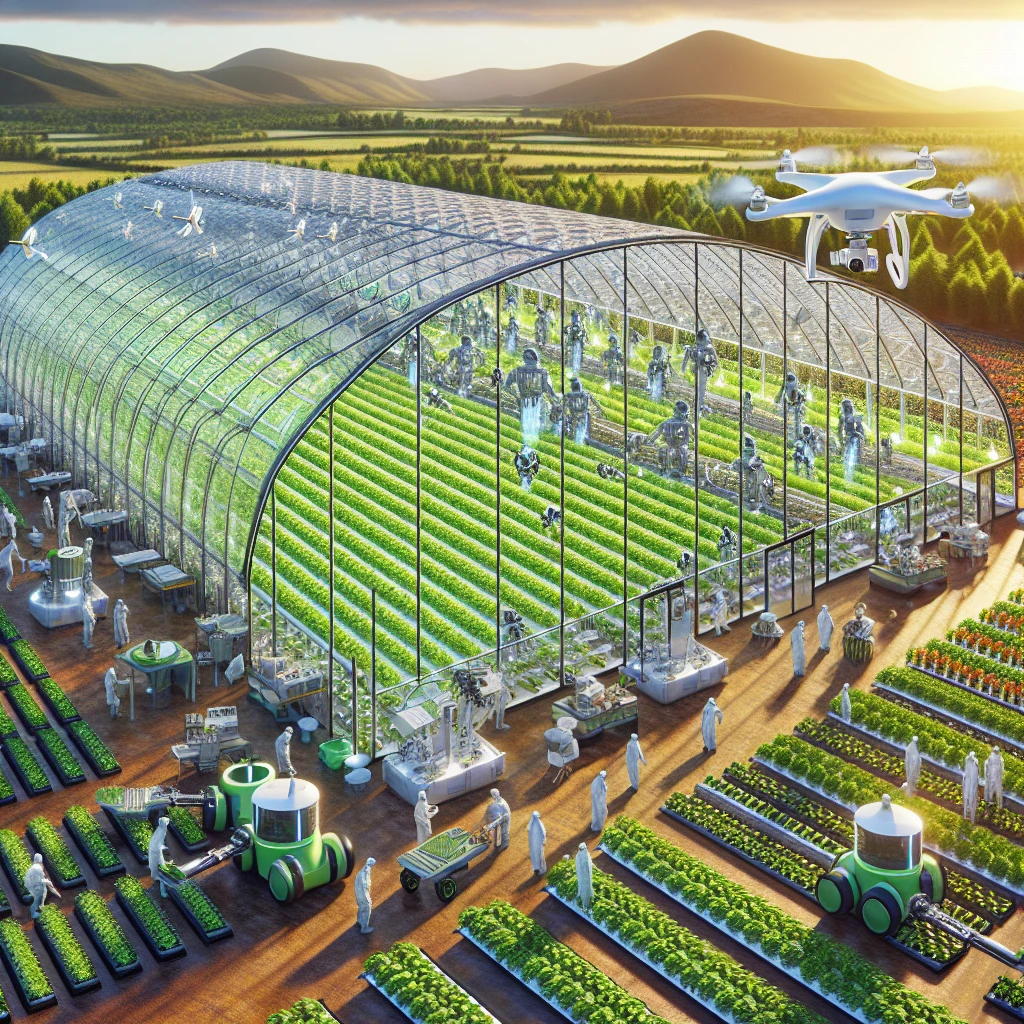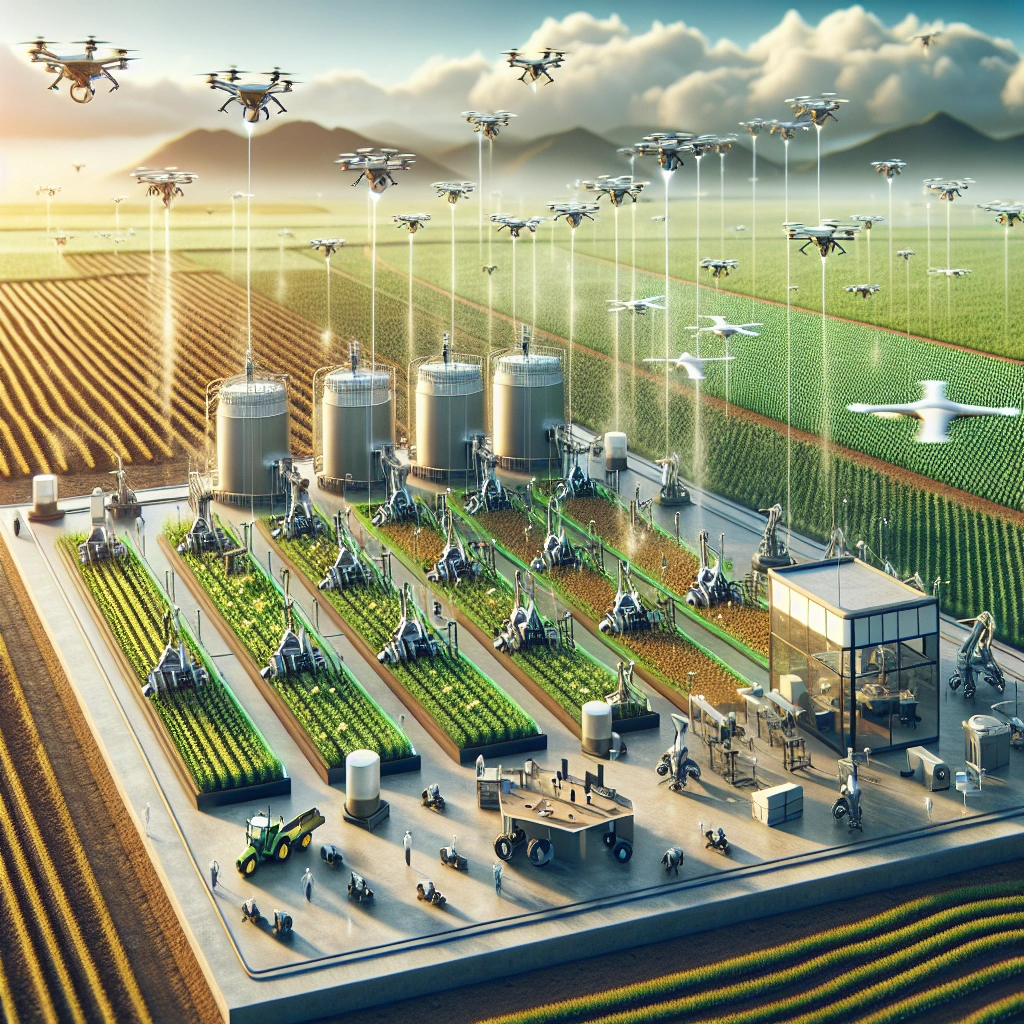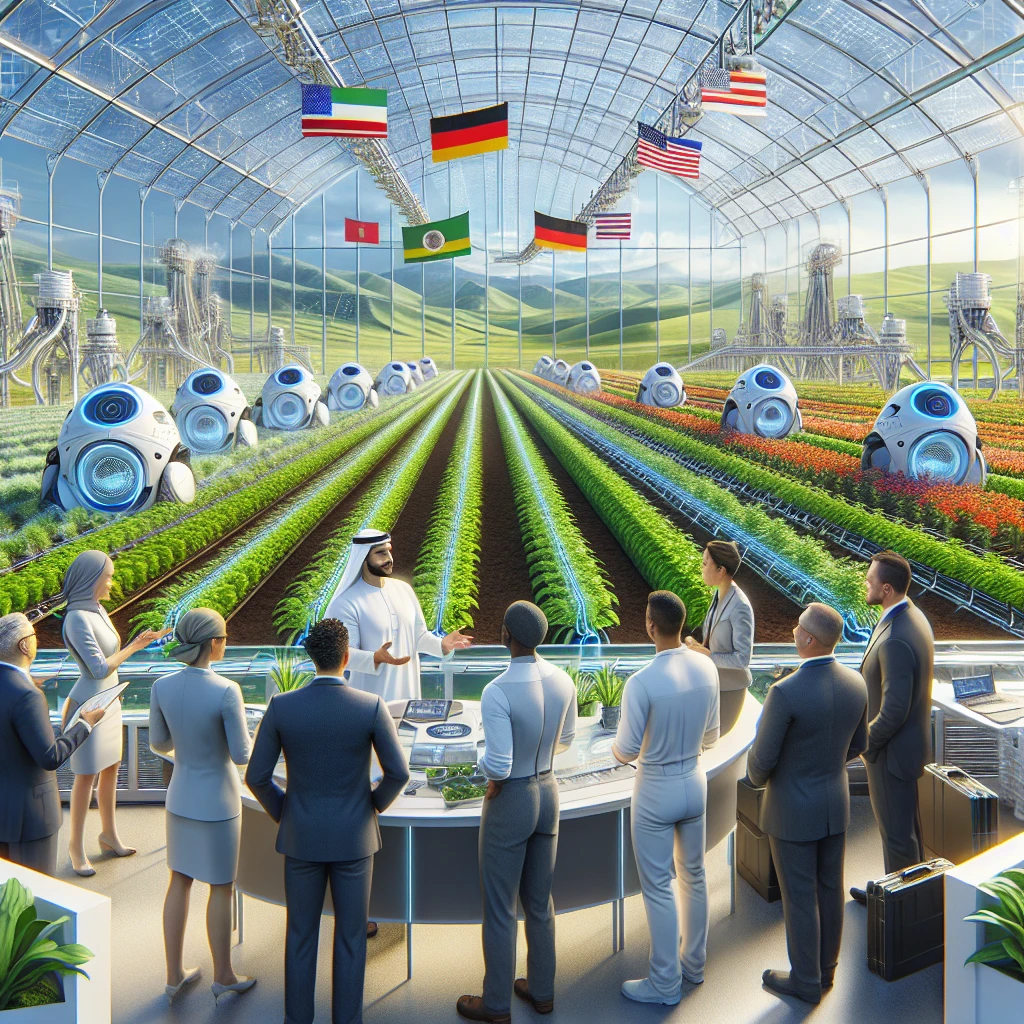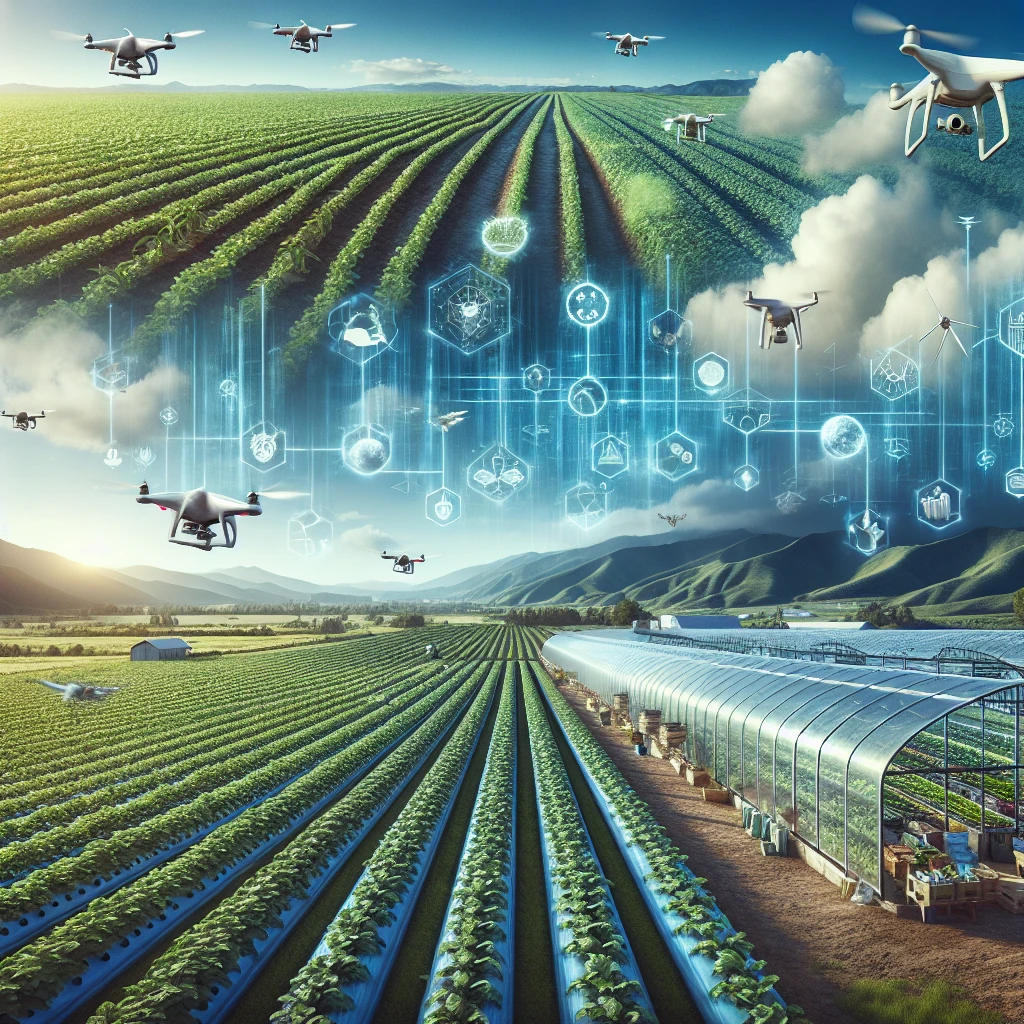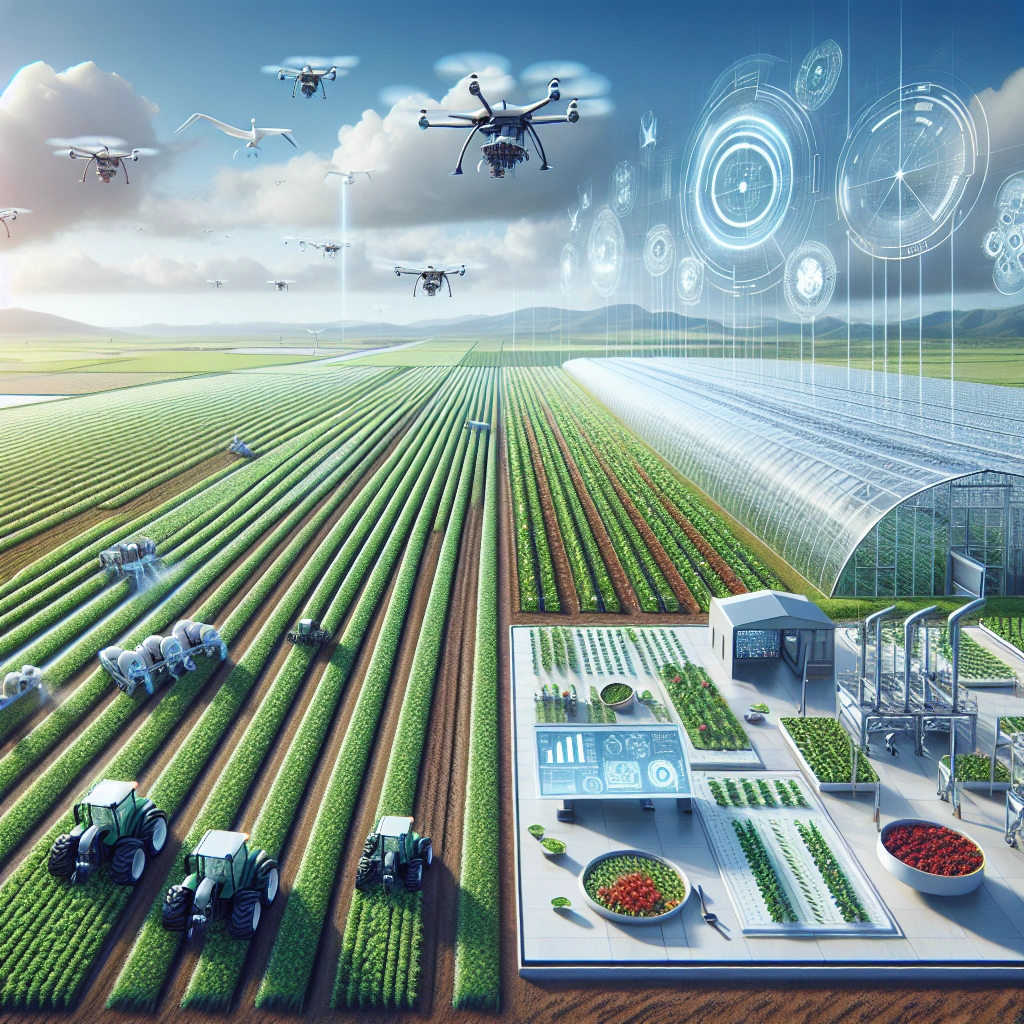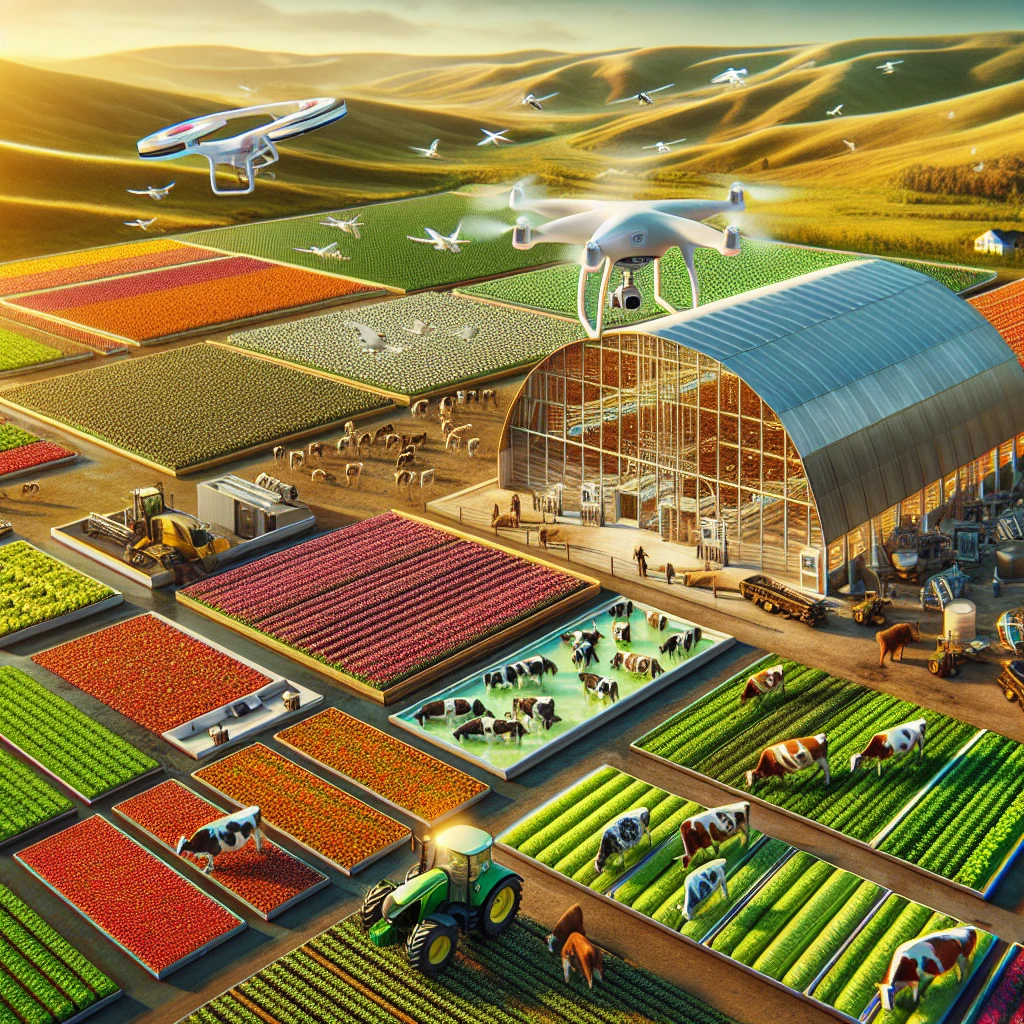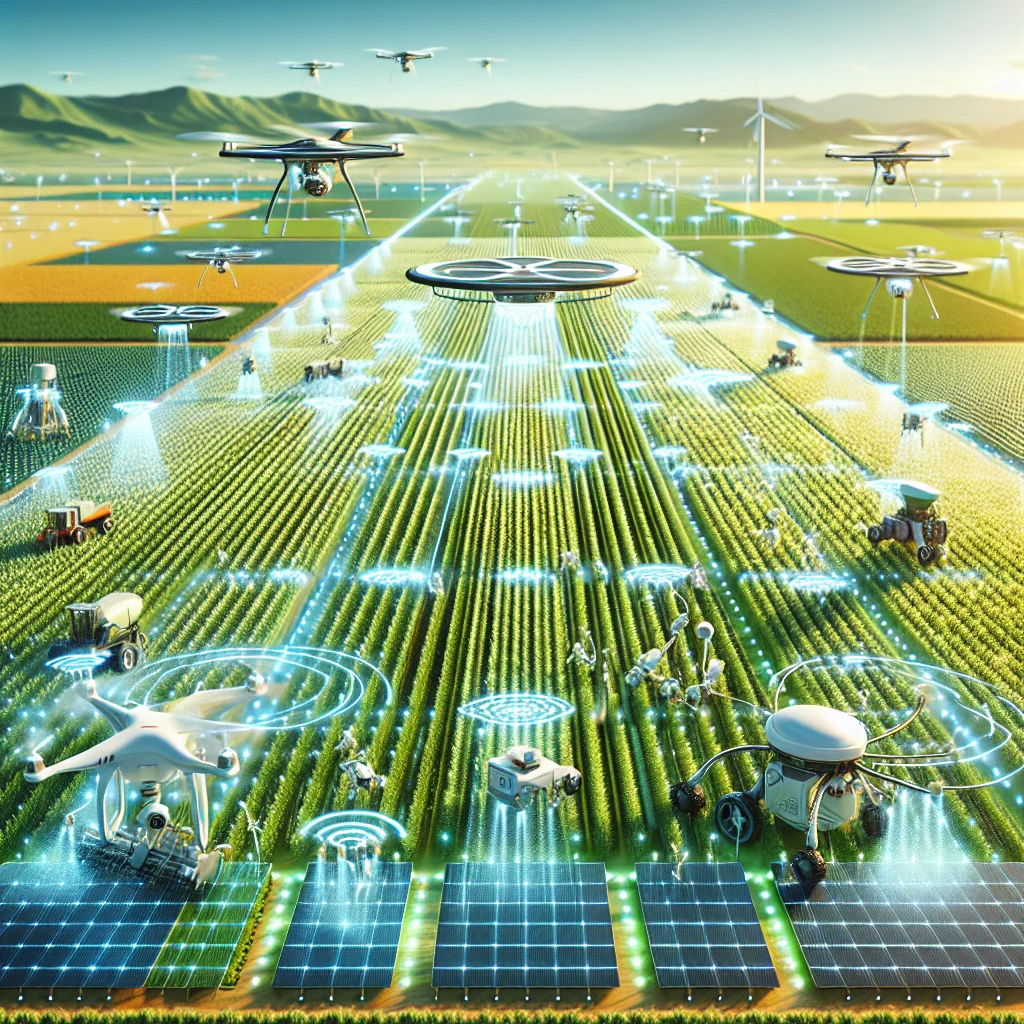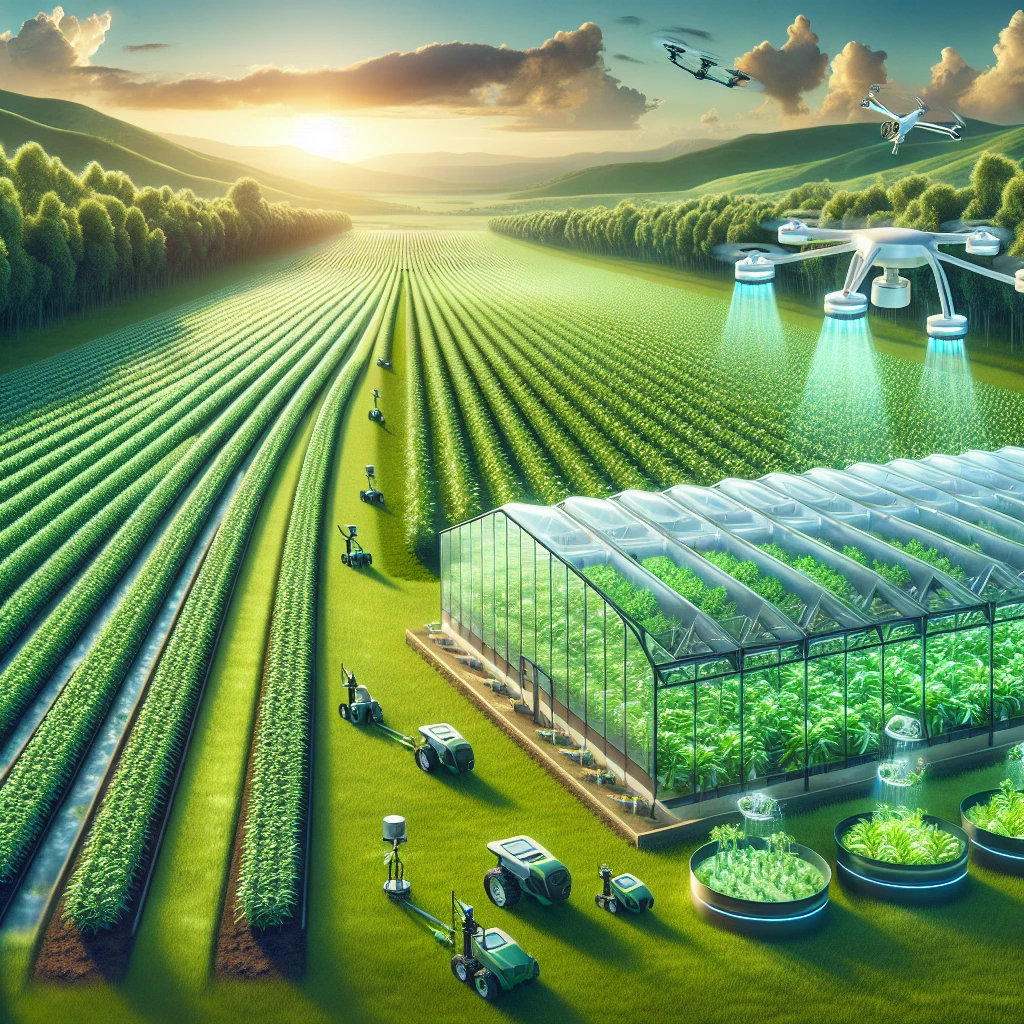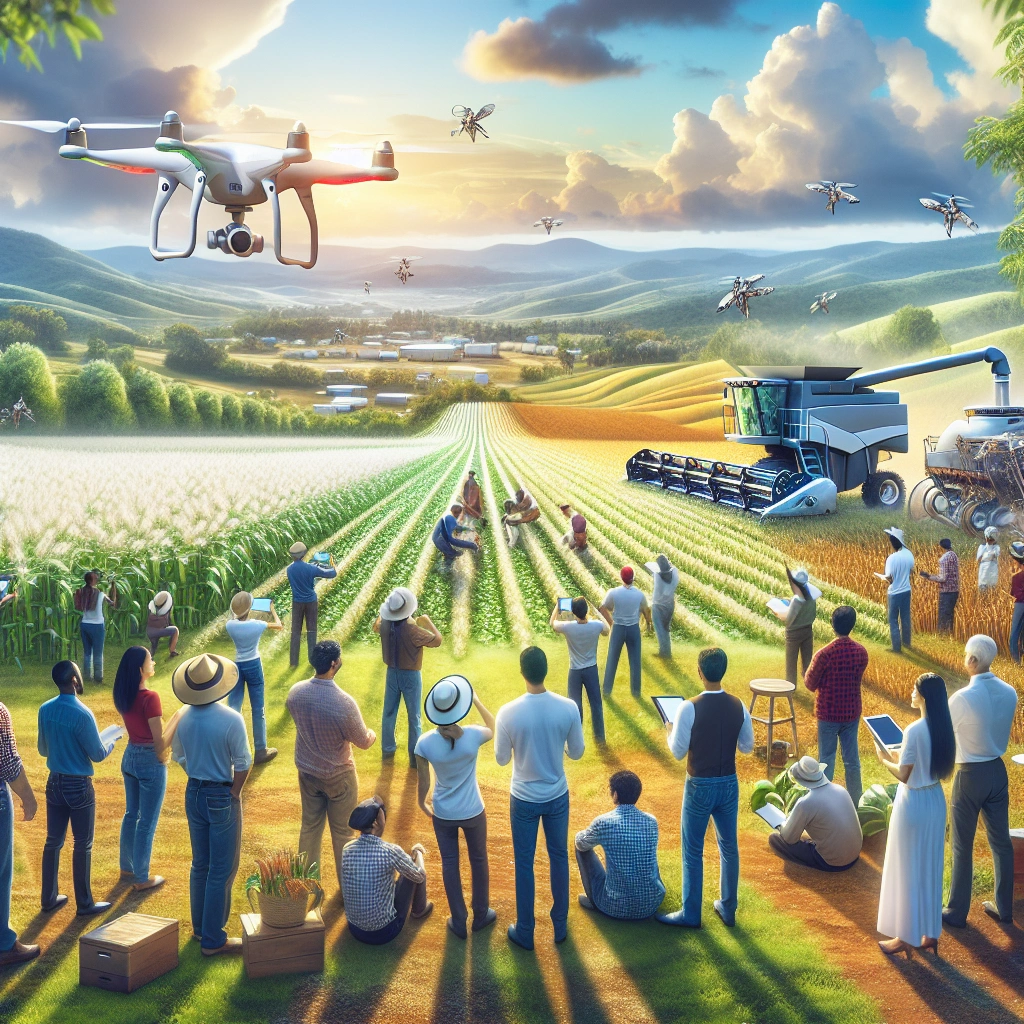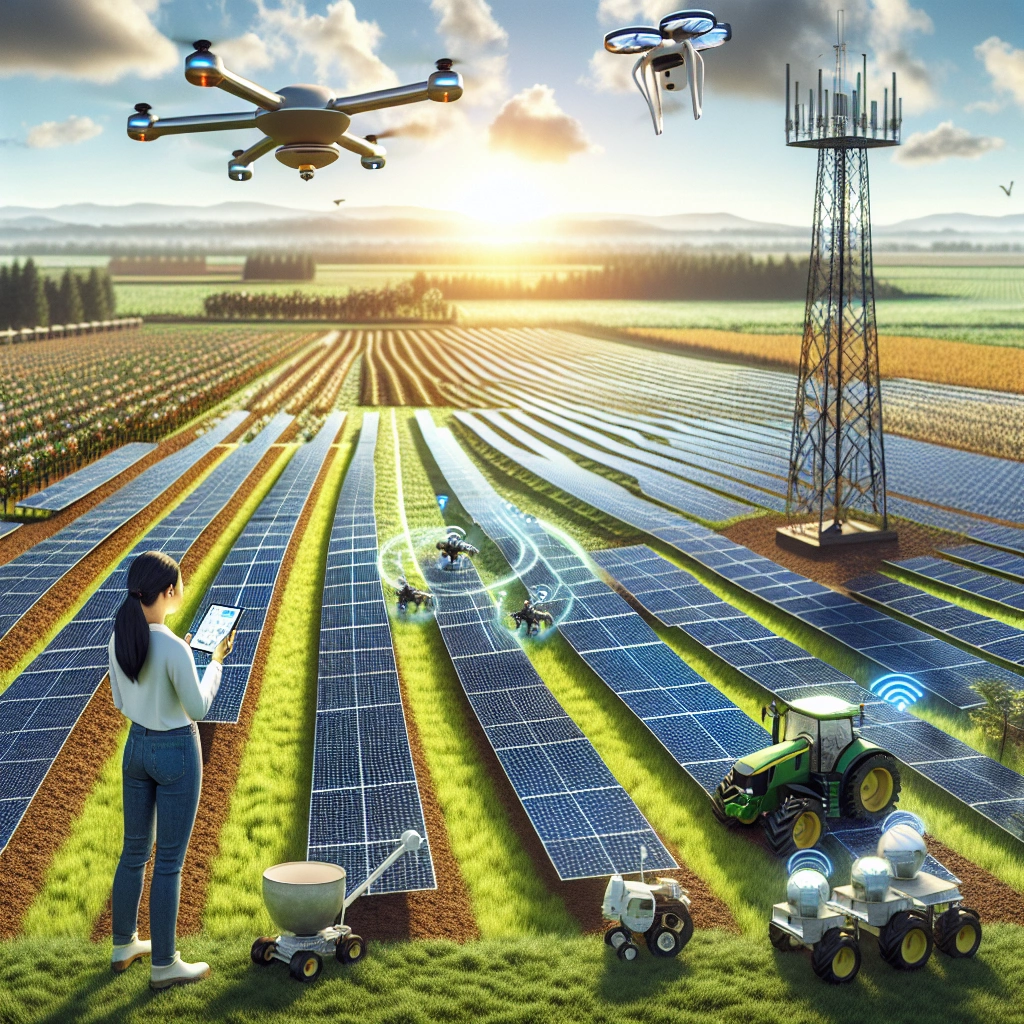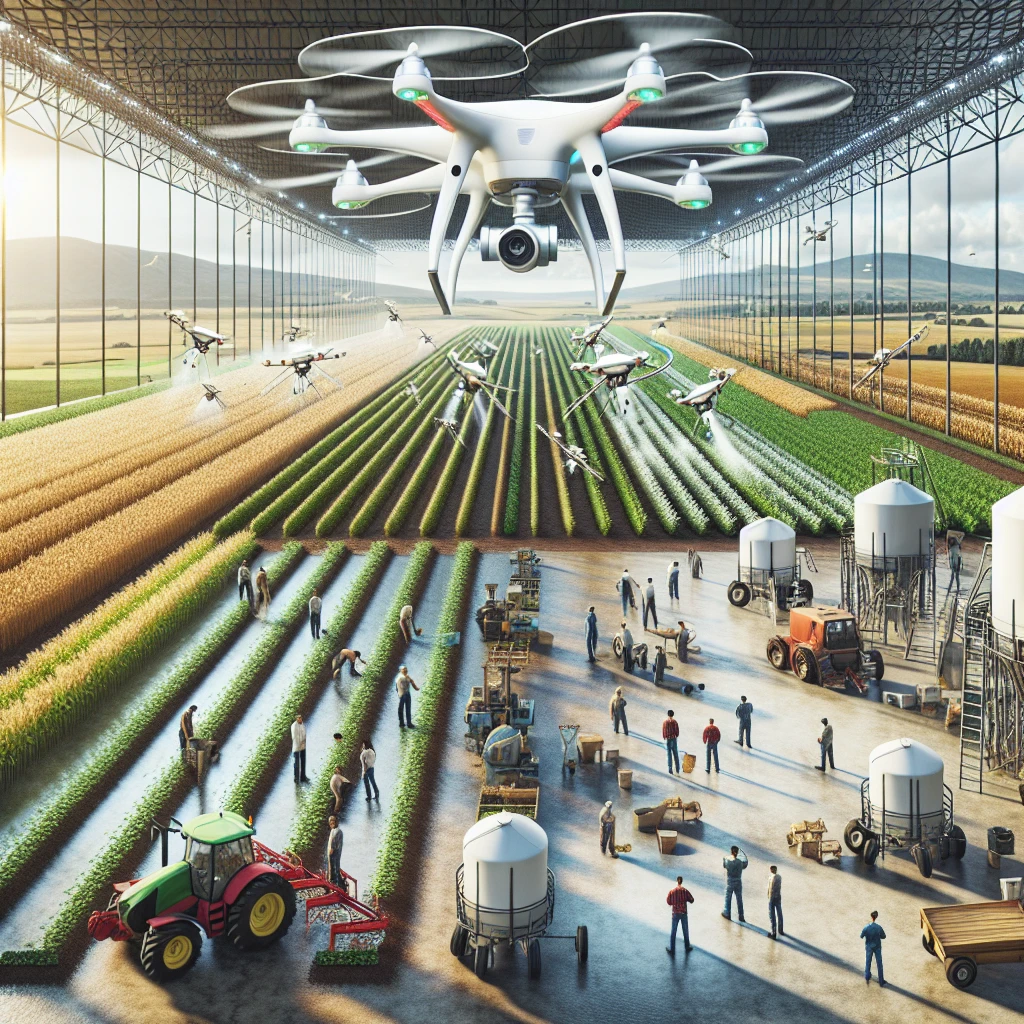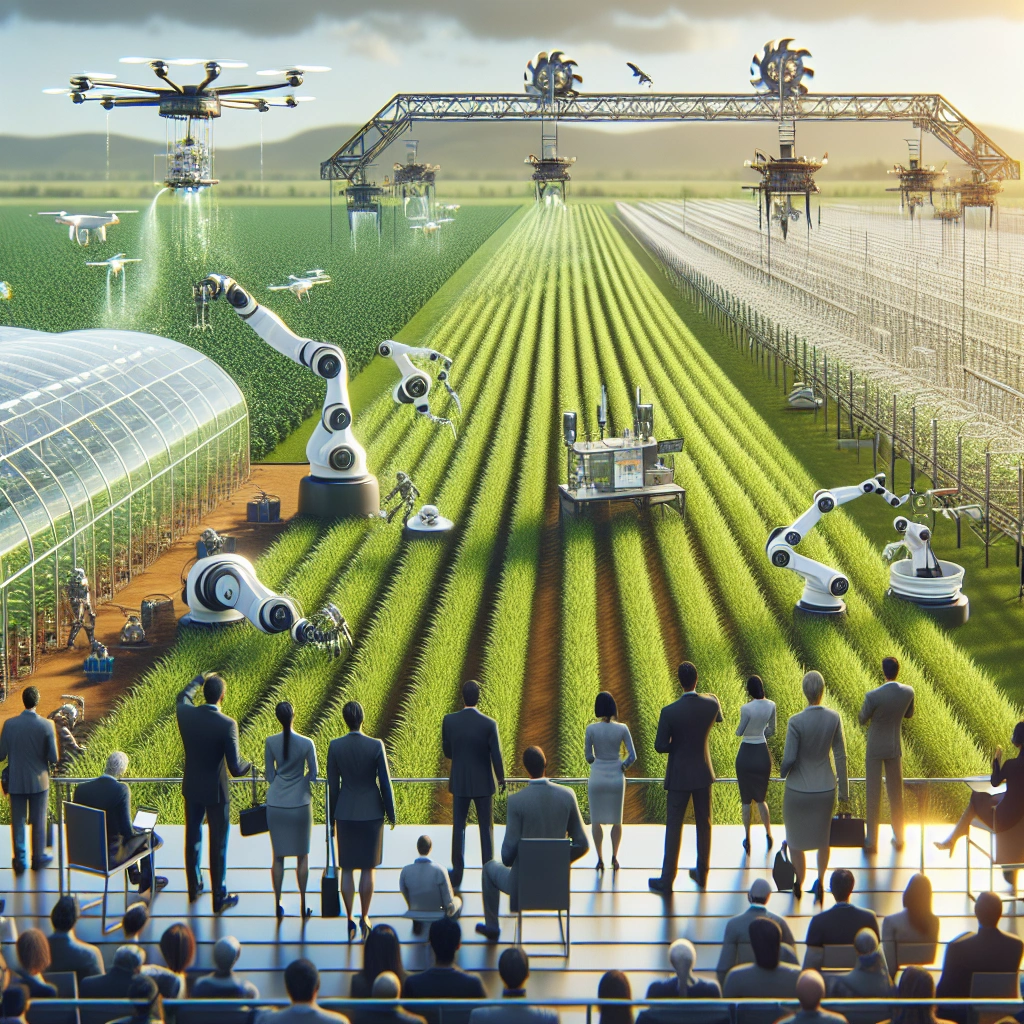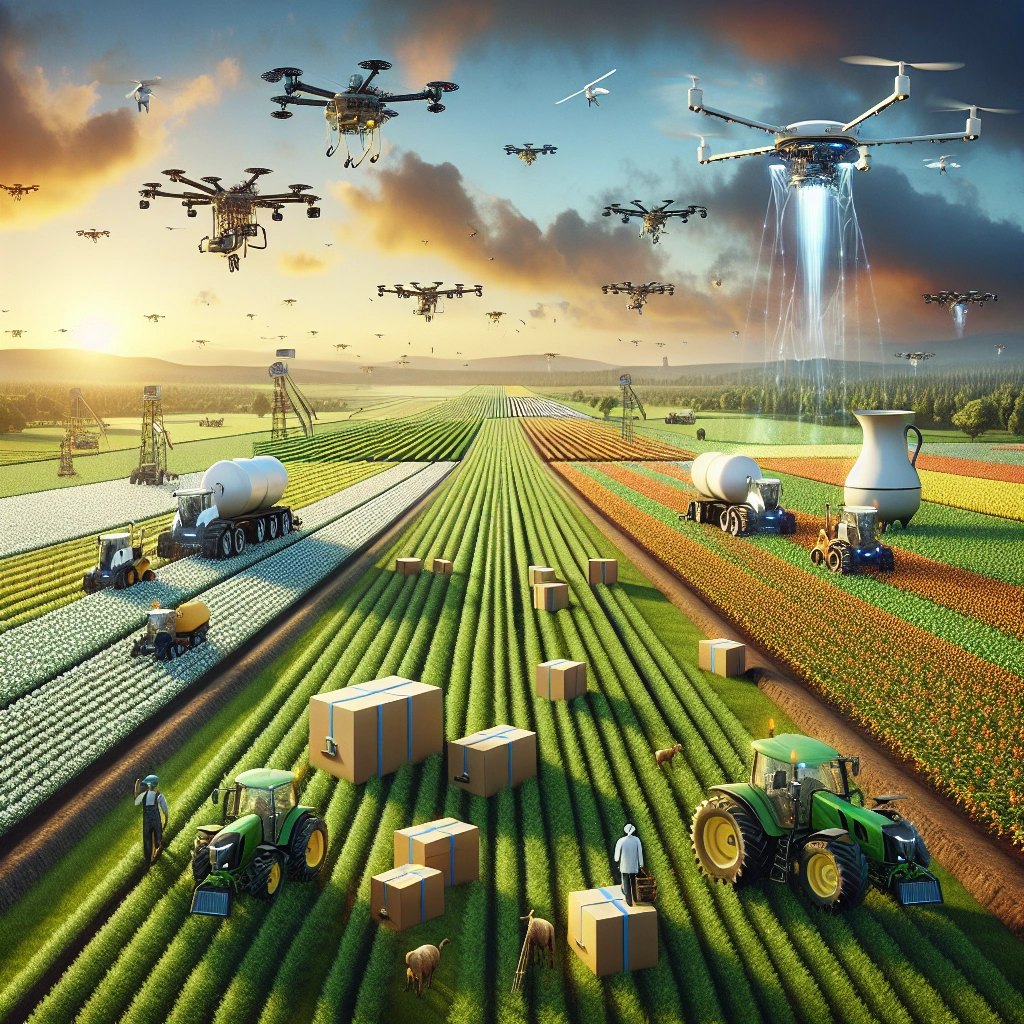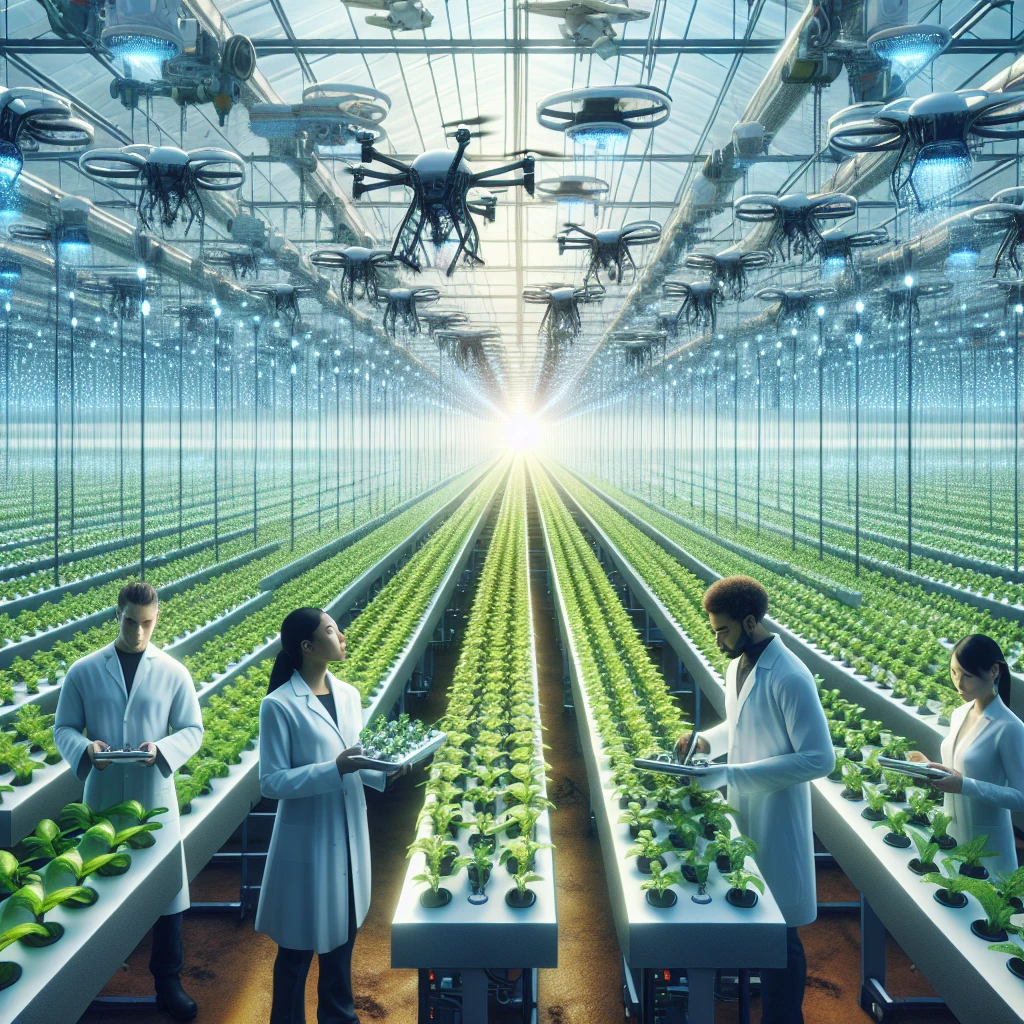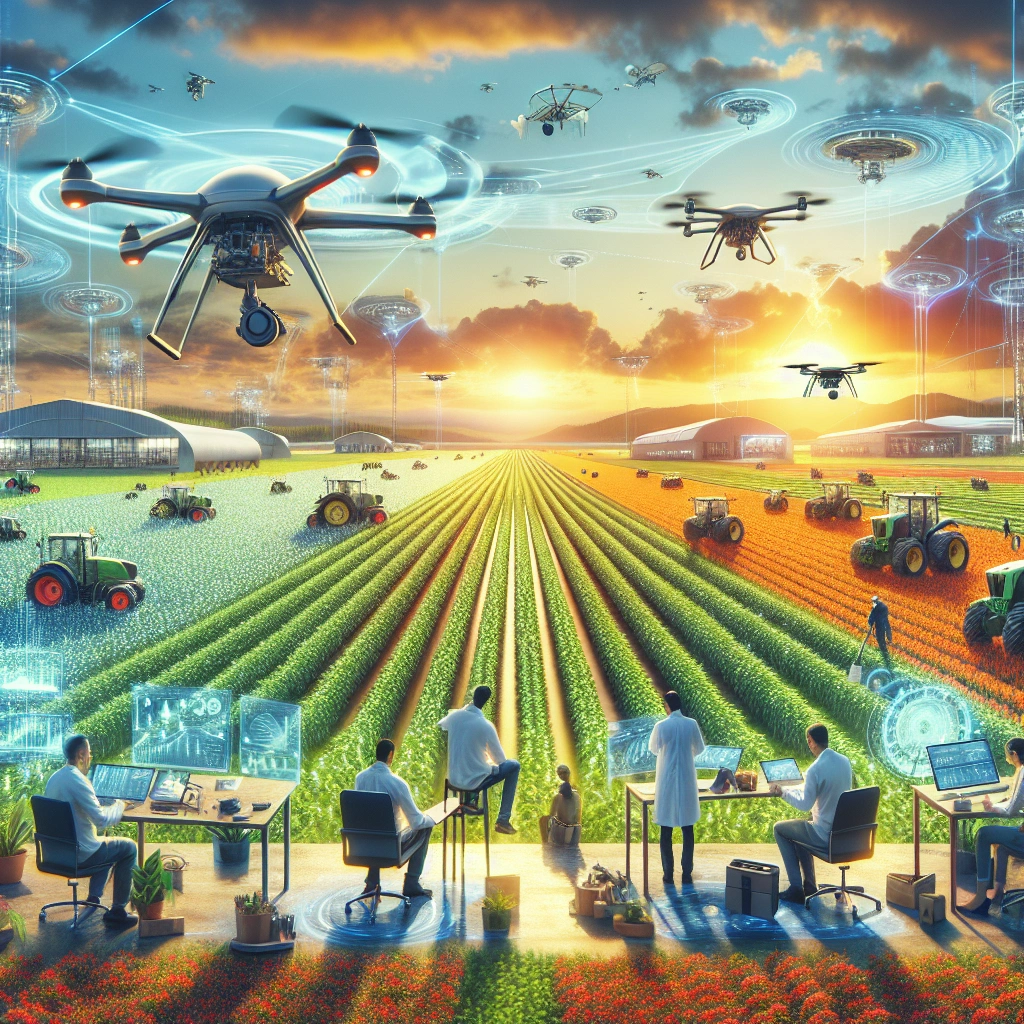

Embracing new technology in agriculture 2023 is crucial for increasing productivity and sustainability in the industry. With the advancements in technology, farmers can improve soil quality, increase crop yields, and streamline farm management, leading to a more efficient and profitable agricultural sector.
The future of agriculture is being shaped by new technology trends such as precision agriculture, indoor vertical farming, and livestock farming technology. These innovations are expected to revolutionize the way farming is done, making it more automated, data-driven, and efficient.
Embracing these technologies will not only benefit farmers but also contribute to meeting the increasing demand for food production in the coming years.
Check out this Youtube video: “The Tech Trends Changing Agriculture | Gartner …” to stay updated on the new technology in agriculture for 2023.
Advantages of New Technology in Agriculture 2023
| Advantages of New Technology in Agriculture 2023 |
|---|
| Increased efficiency in farming practices |
| Enhanced sustainability and environmental impact |
| Improved crop yield and quality |
| Reduction of manual labor through automation |
Types of New Technology in Agriculture 2023
Precision agriculture
Precision agriculture leverages technology like GPS, sensors, and data analytics to optimize farming practices and maximize crop yield. This innovative approach enables farmers to make data-driven decisions regarding planting, irrigation, and fertilizer application, leading to more efficient resource utilization and reduced environmental impact.
Vertical farming
Vertical farming represents a groundbreaking shift in agricultural practices, using technology to grow crops in vertically stacked layers. By integrating AI and automation, vertical farms optimize growing conditions, resulting in higher yields within a smaller footprint, and reducing water and pesticide usage.
This sustainable method of food production holds great promise for meeting the growing demand for fresh produce.
Drone technology for crop monitoring
Drones equipped with advanced imaging technology provide real-time insights into crop health, enabling farmers to identify areas of concern such as pest infestations, nutrient deficiencies, and irrigation needs. This streamlined monitoring process allows for proactive intervention, maximizing crop productivity while minimizing resource wastage and environmental impact.
AI and machine learning in agriculture
AI and machine learning revolutionize agricultural practices by analyzing vast datasets to optimize crop management. These technologies enable predictive analytics for weather patterns, disease outbreaks, and pest infestations, empowering farmers to make proactive decisions that enhance crop yield and resource efficiency.
Additionally, AI-driven robotics streamline labor-intensive tasks such as planting, harvesting, and sorting, increasing operational efficiency.
| Technology Application | Advantages |
|---|---|
| Precision agriculture | Data-driven decisions, resource optimization |
| Vertical farming | Higher yields, resource efficiency |
| Drone technology | Real-time monitoring, proactive intervention |
| AI and machine learning | Predictive analytics, operational efficiency |
Challenges and Limitations
| Challenges and Limitations | |||
|---|---|---|---|
| Cost of implementing new technology | Lack of technical knowledge and training for farmers | Potential disruption to traditional farming practices | Concerns about data privacy and security |
| Implementing new agricultural technology in 2023 comes with substantial costs, including increased seed and fertilizer expenses that have seen a steep rise. The upward trend in seed costs, rising by 263 percent to $98 per acre, and fertilizer costs rising by 149 percent has put a financial strain on farmers. These costs pose a significant barrier to adopting innovative technology. | |||
| Farmers face a significant challenge due to a lack of technical knowledge and training in leveraging new agricultural technology. Ongoing education is essential for farmers to keep up with rapid technological advancements, business management, and other necessary skills for effective implementation. Limited access to advanced digital tools and inadequate training impedes the potential benefits of new technology. | |||
| The integration of new technology in agriculture may disrupt traditional farming practices, causing concerns among farmers. This disruption may lead to resistance, as traditional methods are deeply ingrained in agricultural communities. Farmers may consider the potential upheaval and resistance to change as a drawback, hindering the widespread adoption of new technology. | |||
| Data privacy and security concerns are pivotal in the adoption of new technology. With the increasing reliance on digital tools and data-driven insights, farmers express apprehension regarding the safety and privacy of their agricultural data. These worries around data protection may act as a significant limitation to embracing new agricultural technology. |
Impact of New Technology on Small Scale Farming
Access to resources and information for small scale farmers
In a world where information is power, small scale farmers now have unprecedented access to resources and information, thanks to new agricultural technologies in 2023. From digital platforms providing real-time market trends to online resources offering valuable farming insights, small scale farmers are now equipped with the knowledge and tools to make informed decisions about their crops and livestock. This enhanced access allows them to optimize their farming practices, resulting in increased productivity and efficiency.
Potential for increased profits and market competitiveness
The infusion of new technology in agriculture in 2023 presents an exciting opportunity for small scale farmers to boost their profits and enhance market competitiveness. With advanced data analytics, farmers can optimize their production processes, reduce waste, and meet the evolving demands of consumers and distributors.
This can lead to higher-quality agricultural products, improved pricing strategies, and a stronger foothold in the market, ultimately resulting in increased profitability and sustained growth for small scale farmers.
Challenges and barriers for adoption in developing countries
While the benefits of new agricultural technologies are substantial, developing countries face unique challenges and barriers in their adoption. Factors such as the cost of technology, limited access to reliable electricity and internet connectivity, and insufficient training on technology utilization pose significant obstacles for small scale farmers in these regions.
Additionally, market and certification barriers, exacerbated by climate change, population increase, and water scarcity, further hinder the seamless integration of innovative agricultural technologies into farming practices.
| Challenges and Barriers for Adoption in Developing Countries |
|---|
| Cost of Technology |
| Limited Access to Electricity and Internet |
| Insufficient Training on Technology Utilization |
| Market and Certification Barriers |
| Climate Change and Water Scarcity |
Government Initiatives and Support for New Technology
Funding and grants for agricultural innovation
- The USDA’s Urban Agriculture and Innovation Production (UAIP) competitive grants aim to expand efforts in urban farming and foster innovation among farmers, citizens, and government officials for the year 2023.
- USDA has announced a substantial grant funding of $133 million available in competitive grant funds through the Local Agriculture Market Program (LAMP) to bolster local and regional food systems and enhance the accessibility of locally sourced products.
Policies and regulations to facilitate technology adoption
- The U. S. Department of Agriculture (USDA) plays a pivotal role in facilitating the adoption of technologies for sustainable farming systems.
- There are specific laws and regulations under the EPA that apply to agriculture, such as those related to buildings, chemical handling, air emissions/releases, and wastes. These policy measures are vital in ensuring the smooth integration of new technologies into the agricultural sector.
Collaborations with technology companies and research institutions
- The USDA partners with private sector tech companies to drive innovation in food and agriculture.
- The National Institute of Food and Agriculture collaborates with research institutions to address food safety, sustainability, resource management, biotechnology, and crop-related issues in the agricultural sector.
| Technology Trend | Description |
|---|---|
| Digital Identity Management | Essential for securing transactions and data in the agricultural industry |
| Public Service Automation | Utilizing AI for streamlining public services |
| Cybersecurity Importance | Increasing focus on cybersecurity measures to safeguard agricultural technology systems |
Remember, it’s crucial to emphasize these grant funds and programs to support and foster agricultural innovation in 2023.
Role of Startups and Tech Companies in Agriculture 2023
Innovation in agri-tech products and services
In 2023, the role of startups and tech companies in agriculture will be pivotal in driving innovation in agri-tech products and services. These entities will revolutionize the agricultural landscape by introducing cutting-edge technologies such as precision agriculture, indoor vertical farming, and artificial intelligence.
For example, Bee Vectoring Technologies and their innovative approach to utilizing bees for natural crop pollination showcases the level of innovation that startups are bringing to the agricultural sector.
Collaboration with traditional agricultural businesses
The year 2023 will witness increased collaboration between startups and traditional agricultural businesses, fostering a mutually beneficial partnership. Startups will bring forth technological advancements in crop protection, biofertilizers, supply chain transparency, and IoT technologies.
This collaboration will enhance operational efficiencies, reduce environmental impact, and elevate the overall productivity of traditional agricultural businesses.
Market trends and investment opportunities in agricultural technology
In 2023, the agricultural technology market is projected to experience substantial growth, offering lucrative investment opportunities. With the market valued at $18.12 billion in 2021 and expected to reach $43.37 billion by 2030, it presents an attractive landscape for investors.
Furthermore, emerging trends such as precision agriculture, artificial intelligence, and big data indicate a promising trajectory for technological advancements in agriculture, making it an opportune time for investors to capitalize on this expanding market.
| Innovation in agri-tech products and services | Collaboration with traditional agricultural businesses | Market trends and investment opportunities in agricultural technology |
|---|---|---|
| – Precision agriculture – Indoor vertical farming – Artificial intelligence – Bee Vectoring Technologies | – Crop protection & biofertilizers – IoT technologies – Supply chain transparency | – Market valued at $18.12 billion in 2021 – Expected to reach $43.37 billion by 2030 – Growing trends in precision agriculture, artificial intelligence, and big data |
This outlines the significant impact and extensive opportunities that startups and tech companies are poised to contribute to the agricultural sector in 2023.
Future Trends to Watch in New Technology in Agriculture 2023
Integration of IoT and sensor technology
The integration of IoT and sensor technology in agriculture is rapidly changing the landscape of modern farming. Smart sensors provide real-time data on crucial agricultural factors such as crop health, soil moisture, and weather patterns, enabling farmers to make informed decisions to optimize production.
For example, IoT-based technologies allow for precision farming, monitoring vital data related to crops, soil, water, and air, ultimately leading to improved crop yields and resource efficiency.
Expansion of data analytics and decision support systems
The expansion of data analytics and decision support systems in agriculture is revolutionizing the way farmers make critical decisions. Agricultural data analytics provides insights into soil conditions, weather patterns, and crop growth, empowering farmers to optimize irrigation, fertilization, and pest control.
This improved optimization leads to increased crop yields and resource efficiency, effectively transforming traditional farming practices.
Advances in biological and genetic engineering for crops
The advancements in biological and genetic engineering for crops represent a groundbreaking shift in agricultural innovation. Future genetic engineering approaches aim to improve plant yield, increase production efficiency, and enhance nutrient-use efficiency, ultimately contributing to global food security.
With precise genome engineering and transgene-free applications, technologies such as CRISPR are poised to transform plant breeding, ensuring the development of genetically engineered crops that can meet the increasing global food demand.
Development of sustainable packaging and food distribution systems
The development of sustainable packaging and food distribution systems marks a pivotal development in the agricultural industry. It focuses on minimizing waste and reducing environmental impact.
Innovations in sustainable packaging and distribution systems are crucial for ensuring the efficient and responsible delivery of agricultural products to consumers while minimizing the ecological footprint. This forward-looking approach reflects a commitment to sustainability and environmental stewardship in agriculture.
Adoption of New Technology by Livestock and Dairy Farming
Automation in dairy farming
Robotic Milking: With the adoption of automated milking systems, dairy farming has seen a significant advancement. Robotic milking machines have revolutionized the process by automatically guiding the herd into the milking shed, identifying each cow individually through scanning, milking the cows, checking the milk, and recording essential data. This technology has enabled efficient and precise milking processes, thereby improving productivity and reducing labor requirements.
Genetic engineering for livestock health and productivity
Livestock Genetic Engineering: Genetic engineering in livestock has led to enhanced productivity and animal welfare. Examples of this include the modification of animals to exhibit improved growth rates and metabolism. Scientists have introduced genes that regulate growth and metabolism, ultimately leading to animals reaching market weight more quickly. Consequently, genetic engineering has resulted in increased efficiency and profitability for farmers.
IoT applications in animal monitoring and welfare
IoT-Enabled Livestock Management: Livestock management has been revolutionized through IoT-enabled collars or tags that track and monitor the health and location of animals. This technology offers real-time tracking and health monitoring, leading to enhanced animal welfare, reduced losses, and overall improved farm management.
| Advancements in Livestock Technology | Benefits |
|---|---|
| Robotic Milking Systems | Efficient and precise milking, improved productivity, reduced labor |
| Genetic Engineering | Enhanced growth rates, improved metabolism, increased efficiency and profitability |
| IoT-Enabled Livestock Management | Real-time tracking, enhanced animal welfare, reduced losses |
These technological advancements have significantly transformed livestock and dairy farming, providing sustainability and efficiency that benefits both farmers and animal welfare.
Global Impact and Market Trends
Emerging markets for agricultural technology
The emerging markets for agricultural technology in 2023 are set to redefine the landscape of global farming. With the increasing demand for farm automation, digitalization, and sustainability, countries like India, Brazil, and China are emerging as hotspots for the adoption of innovative agri-tech solutions.
These markets are witnessing a shift towards smart farming practices, leveraging cutting-edge technologies to optimize resource utilization and minimize crop losses.
International collaborations and partnerships in agri-tech
International collaborations and partnerships in the agri-tech sector are pivotal for driving innovation and sustainable agricultural practices globally. For instance, strategic collaborations between agricultural technology companies based in the United States and startups in Southeast Asia are facilitating the transfer of advanced farming technologies and practices.
These partnerships are crucial for scaling up impactful solutions and addressing challenges such as climate change and food security on a global scale.
Market forecasts and projections for agricultural technology
The market forecasts for agricultural technology in 2023 depict a significant growth trajectory, with the industry poised to reach new heights. According to reports, the smart agriculture market is projected to soar from $18.12 billion in 2021 to a staggering $43.37 billion by 2030. This exponential growth is indicative of the escalating global demand for innovative agri-tech solutions, highlighting the industry’s substantial potential for the upcoming year.
Sustainability and Environmental Impact of New Technology
Reduction of chemical usage through precision agriculture
Precision agriculture technologies such as GPS and satellite data have revolutionized farming practices, allowing farmers to minimize chemical usage by adopting site-specific and precise farming methods. By leveraging real-time data on soil moisture, temperature, and rainfall, farmers can tailor their pesticide and herbicide applications, reducing overall chemical usage while maximizing crop yield.
This advanced approach not only contributes to environmental sustainability but also promotes the health and resilience of the agricultural ecosystem.
Water conservation and management through technology
Innovative technologies in agriculture, such as precision farming, remote sensing, and data analytics, have significantly enhanced water conservation and management. Systems like drip irrigation and soil moisture sensors enable farmers to optimize water usage by delivering water directly to plants based on their specific needs.
Additionally, advanced monitoring tools provide real-time insights, allowing farmers to make informed decisions about irrigation, ultimately contributing to efficient water management and conservation in agricultural practices.
Contribution to climate change resilience in agriculture
Emerging agricultural technologies offer substantial benefits in enhancing climate change resilience. Improved crop varieties are developed to withstand environmental stresses such as drought, salinity, and pests, ensuring consistent productivity amidst changing climatic conditions.
Additionally, the integration of technology and nature-based solutions supports the development of climate-smart agriculture, promoting adaptive measures to minimize crop loss and combat global hunger. Through the strategic use of technology, farming becomes more resilient and adaptive to the challenges posed by climate change, securing sustainable agricultural practices for the future.
Social and Ethical Implications of New Technology in Agriculture 2023
Impact on rural communities and traditional farming practices
The introduction of advanced agricultural technology in 2023 brings both opportunities and challenges to rural communities and traditional farming practices. While technology can enhance productivity and efficiency, it may also lead to the displacement of traditional farming methods, impacting the livelihoods of rural farmers.
Additionally, the adoption of new technology requires access to resources, posing a potential barrier for smaller, resource-constrained farming communities.
Fair labor and ethical supply chain considerations
With the integration of new technology in agriculture 2023, the focus on fair labor practices and ethical supply chains becomes paramount. It requires ensuring that technological advancement does not compromise the rights of laborers and promotes sustainable and responsible sourcing practices.
Companies must prioritize transparency within their supply chains and leverage technology to monitor and uphold ethical labor standards.
Consumer perceptions and acceptance of technology-aided farming
The acceptance of technology-aided farming among consumers in 2023 plays a crucial role in shaping the agricultural landscape. While some consumers embrace the idea of technology-driven farming for its potential to enhance sustainability and food quality, others may express concerns regarding environmental impacts and the authenticity of technologically produced food.
Thus, fostering consumer trust through transparency and education about the benefits of new agricultural technology is essential for widespread acceptance.
Infrastructure and Connectivity Requirements for Technology Adoption
Access to reliable internet and digital infrastructure
Access to reliable internet and digital infrastructure is crucial for the successful adoption of new technology in agriculture 2023. Farmers need high-speed internet to access real-time data for precision farming, weather forecasts, and market information. Digital infrastructure, including sensor networks and IoT devices, enables smart farming practices, such as automated irrigation and crop monitoring.
Challenges in rural areas and developing countries
Challenges in rural areas and developing countries include limited internet connectivity, inadequate infrastructure investment, and geographical barriers. Many rural areas lack the necessary infrastructure for high-speed internet, hindering the adoption of advanced agricultural technology.
Geographical barriers further complicate the installation of digital infrastructure, creating significant challenges for technology adoption in agriculture.
Investment in technology infrastructure for agricultural regions
Investment in technology infrastructure for agricultural regions is essential to bridge the digital divide and enable widespread adoption of new technology in agriculture 2023. Governments and private sector entities must prioritize infrastructure development to ensure seamless connectivity and access to digital tools for farmers in rural and developing areas. A focus on building robust telecommunications networks and expanding broadband coverage is critical to drive technological advancements in agriculture.
| Country/Region | Internet Connectivity | Infrastructure Investment |
|---|---|---|
| United States | High-speed internet coverage in rural areas needs improvement | Ongoing investment in digital infrastructure projects |
The progress of technology adoption in agriculture heavily depends on addressing the connectivity and infrastructure challenges to empower farmers with the tools they need to thrive in the digital age.
Education and Training for Farmers in New Technology
Programs and initiatives for technology literacy in agriculture
FarmTech Accelerator: A new program launched by the government in 2023, aiming to provide hands-on training to farmers in utilizing cutting-edge technologies like AI-driven crop monitoring and precision farming equipment.
Skills development and capacity building for farmers
Virtual Reality Training: Farmers are being trained using VR simulations to develop skills in operating advanced machinery and implementing smart farming techniques, ensuring they are well-equipped to handle the latest agricultural technology.
Role of agricultural extension services in technology adoption
Digital Workshops: Agricultural extension services are conducting virtual workshops to educate farmers about the benefits of adopting new technology, emphasizing its potential to enhance productivity and sustainability.
| Benefit | Description |
|---|---|
| Improve Efficiency | New technology enables farmers to optimize operations, leading to increased productivity. |
| Sustainable Agriculture | Adoption of technology promotes environmentally friendly practices for long-term benefits. |
| Enhanced Product Quality | Modern techniques ensure high-quality yields, meeting the demands of the market. |
In 2023, the landscape of agriculture is rapidly evolving, and the education and training initiatives for farmers play a pivotal role in ensuring their seamless integration with the latest technology for sustainable and efficient farming practices.
Investment and Funding Opportunities in New Technology in Agriculture 2023
Venture capital and private investment in agricultural technology
Last year saw a significant increase in venture capital and private investment in agricultural technology, with agrifoodtech startups raising a substantial $1.7 billion in funding. Despite a decline from the record-breaking 2021 levels, this indicates a growing interest in the industry.
A notable example is the substantial investments made in agtech, with nearly $5 billion invested in the sector across 440 funding deals to VC-backed startups. This demonstrates the industry’s attractiveness to investors seeking innovative opportunities in agriculture technology.
Government initiatives for agri-tech startups and innovation
On the governmental front, there are substantial initiatives in place to support agri-tech startups and foster innovation in the agricultural sector. The U. S. Department of Agriculture (USDA) announced a commendable investment of over $12.5 million as part of the USDA Small Business Innovation Research (SBIR) and Small Business Technology Transfer (STTR) programs.
Moreover, various schemes such as the National e-Governance Plan in Agriculture (NeGPA) and the Promotion of Agriculture Mechanisation for in-situ Management of Crop Residue indicate a proactive approach to promoting technological advancements in agriculture.
Opportunities for collaboration and partnerships in the industry
An exciting aspect of the industry is the potential for collaboration and partnerships. Agricultural practitioners and technology providers have started collaborating to enhance their systems and processes, paving the way for more innovative solutions.
Furthermore, the United States Department of Agriculture (USDA) and the Food and Drug Administration (FDA) have unveiled strategic plans related to scientific research and innovations in agriculture and food safety, highlighting the sector’s eagerness to foster collaboration and drive future advancements.
Recommended Amazon Products for New Technology in Agriculture 2023
Here’s a curated list of products that can help you embrace and benefit from new technology in agriculture in 2023. These recommendations are based on functionality, price, and positive customer reviews.
Precision Agriculture
Precision agriculture technology is essential for modern farming practices. Farmers can benefit from the precision and efficiency it offers, resulting in improved crop yield and reduced environmental impact. One highly recommended product in this category is the John Deere AutoTrac Universal Steering Kit for precision guidance and steering solutions.


Pros and Cons
| Pros | Cons |
|---|---|
| Improves efficiency | Requires initial investment |
| Reduces environmental impact | Technical knowledge required |
| Enhanced crop yield | Potential disruption to traditional practices |
Drone Technology for Crop Monitoring
Drones have become an integral part of modern agriculture for crop monitoring and data collection. They provide valuable insights into crop health and growth. One highly recommended product in this category is the DJI Agras T20 Agricultural Drone known for its advanced features and reliability.


Pros and Cons
| Pros | Cons |
|---|---|
| Enhanced crop monitoring | Initial investment in equipment |
| Efficient data collection | Training for operation |
| Improved decision-making | Regulations and restrictions |
AI and Machine Learning in Agriculture
Artificial intelligence and machine learning play a crucial role in agricultural decision-making and automation. Farmers can utilize AI-powered tools for crop analysis and predictive modeling. One highly recommended product in this category is the Blue River Technology See & Spray Machine for advanced weed control and precision agriculture.


Pros and Cons
| Pros | Cons |
|---|---|
| Enhanced weed control | Initial investment and training |
| Advanced precision agriculture | Technical knowledge required |
| Increased efficiency | Potential adoption challenges |
Vertical Farming
Vertical farming enables the efficient use of space and resources for urban agriculture. It maximizes crop production while minimizing environmental impact. One highly recommended product in this category is the AeroGarden Harvest for easy and efficient indoor gardening.


Pros and Cons
| Pros | Cons |
|---|---|
| Space-efficient farming | Initial investment |
| Year-round crop production | Energy consumption |
| Ideal for urban settings | Limited to certain crops |
Top Recommended Product for New Technology in Agriculture 2023
If you’re looking for the best solution for embracing new technology in agriculture 2023, we highly recommend the John Deere AutoTrac Universal Steering Kit. Here’s why:


The John Deere AutoTrac Universal Steering Kit offers advanced precision guidance and steering solutions that can significantly improve farming practices. It enhances efficiency, reduces environmental impact, and leads to improved crop yield and quality. Ready to embrace new technology in agriculture? Check out the John Deere AutoTrac Universal Steering Kit today for the best results!


Conclusion
The new technology in agriculture in 2023 is set to revolutionize farming practices, increase efficiency, and improve crop yields. With the integration of advanced data analysis, precision farming, and automated machinery, farmers can expect to see significant improvements in their overall productivity and profitability.
This shift towards more innovative and sustainable agricultural practices will also contribute to environmental conservation and resource optimization.
Additionally, the introduction of new technology in agriculture in 2023 will bring about a wave of opportunities for young professionals and entrepreneurs to enter the industry. The demand for skilled workers in fields such as data analysis, programming, and machinery operation will create a new workforce in the agricultural sector.
This influx of talent and expertise will drive further innovations and advancements in farming practices, reinforcing the industry’s position as a key player in global food production.
The new technology in agriculture in 2023 presents a promising future for the industry, as it addresses various challenges and introduces solutions for sustainable and efficient farming. As the adoption of these technologies continues to grow, the agricultural sector is expected to experience significant progress and improvement, benefiting both farmers and consumers alike.

